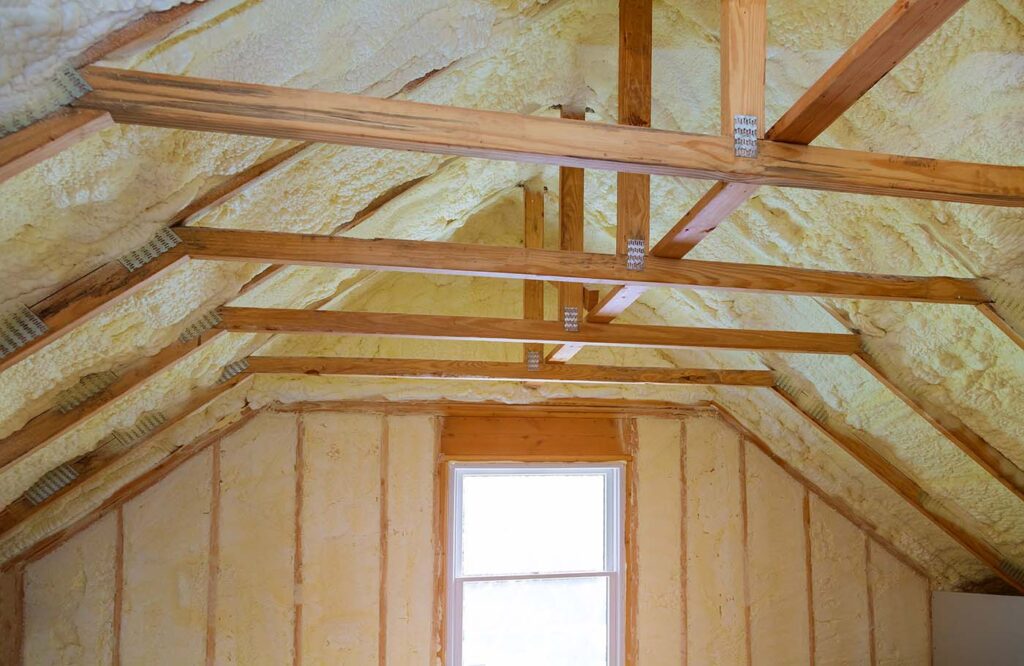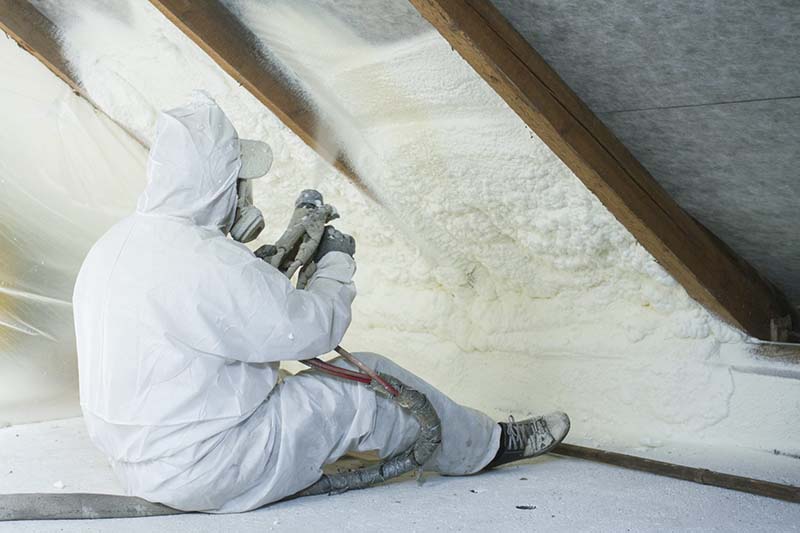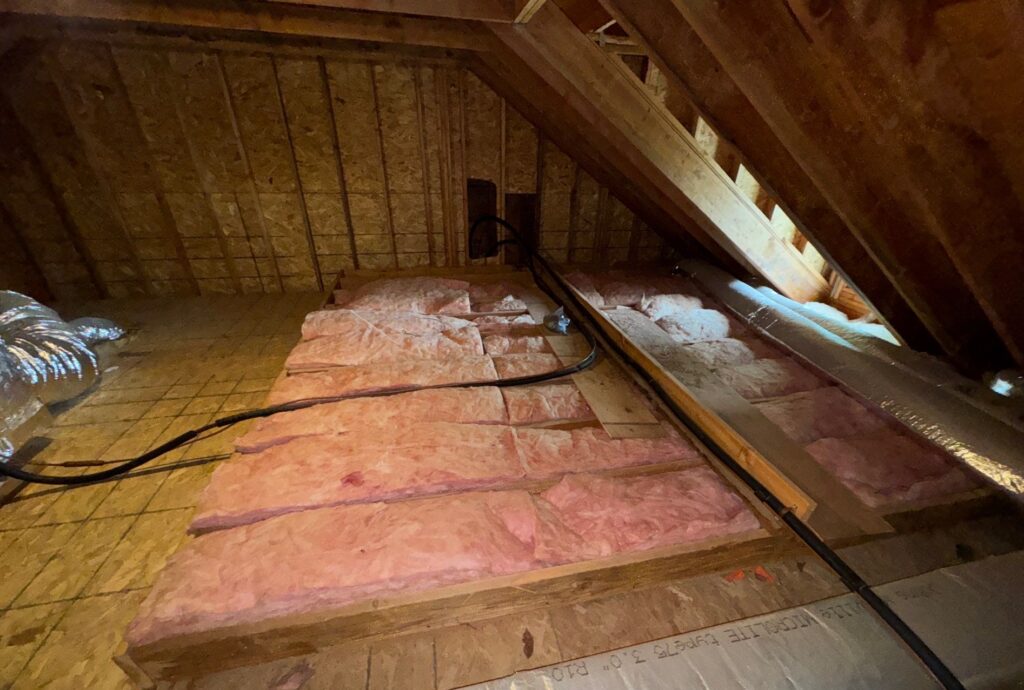When comparing spray foam vs fiberglass insulation, spray foam wins for long-term energy efficiency, air sealing, and comfort—while fiberglass remains a lower-cost option for homeowners looking for quick improvements.
At Metro NY Insulation, we recommend closed-cell spray foam for those who want lasting performance, moisture control, and higher energy savings across New Jersey and Westchester County, NY.
Understanding the Two Insulation Types
Spray Foam Insulation
Spray foam insulation—often called SPF (spray polyurethane foam)—is applied as a liquid that expands to fill cracks, seams, and gaps. It comes in two forms:
Open-cell: Softer and more flexible, ideal for soundproofing and interior walls.
Closed-cell: Dense, rigid, and moisture-resistant, perfect for attics, rim joists, crawl spaces, and basements.
With an R-value between 6.0 and 7.0 per inch, spray foam provides one of the highest thermal resistance ratings available today.
Fiberglass Insulation
Fiberglass insulation, found in batts or blown-in form, is made of fine glass fibers and has been used in homes for decades. It’s lightweight, affordable, and relatively easy to install, with an R-value between 2.5 and 3.2 per inch.
However, fiberglass does not seal air leaks and can lose effectiveness over time if it becomes compressed, dirty, or exposed to moisture.

| Factor | Spray Foam | Fiberglass |
|---|---|---|
| Average Cost per Sq Ft | $1.50 – $3.00 | $0.80 – $1.50 |
| R-Value per Inch | 6.0 – 7.0 | 2.5 – 3.2 |
| Air Sealing | Excellent | Poor |
| Moisture Resistance | High (closed-cell) | Moderate |
| Lifespan | 30+ years | 10–15 years |
At first glance, fiberglass seems cheaper—but when you factor in energy savings, comfort, and longevity, spray foam insulation often pays for itself within a few years. Homeowners typically notice up to 40% lower heating and cooling costs after upgrading.
💡 Think of it like this: fiberglass is a quick patch—spray foam is a permanent solution.
Contact Our Insulation Experts
Performance & Comfort Differences – Spray Foam vs Fiberglass Insulation
The true difference between the two materials isn’t just in numbers—it’s how your home feels afterward.
Spray foam seals air leaks, eliminating drafts and uneven temperatures.
Fiberglass helps slow heat transfer but allows conditioned air to escape through gaps and seams.
Can you imagine walking through your home this winter and finally feeling even warmth in every room? That’s what proper air sealing and high R-value insulation can deliver.
Environmental Impact & Air Quality
Energy Efficiency
Spray foam’s airtight seal means your heating and cooling system doesn’t work as hard, cutting energy use and reducing your carbon footprint.
Health & Safety
Both fiberglass and spray foam are safe when installed correctly. Once spray foam cures (hardens), it becomes completely inert and helps prevent allergens, humidity, and pollutants from entering your living spaces.
At Metro NY Insulation, we use BPI-certified installation practices to ensure every project meets strict health and efficiency standards.

What Our Experts Recommend
For most homes in New Jersey and Westchester County, NY, closed-cell spray foam insulation provides the best long-term performance—especially for attics, crawl spaces, and basements where air leakage and moisture are common.
However, fiberglass can still make sense for quick upgrades or budget-friendly retrofits in walls or ceilings where air sealing is already adequate.
Not sure which one’s right for you? Our team can inspect your home, measure energy loss, and recommend the ideal solution for your budget and comfort goals.

Rebates & Energy Incentives
Metro NY Insulation proudly participates in the NYSERDA Home Performance Program (New York)
Homeowners may qualify for up to $6,200 in rebates and tax credits when upgrading to energy-efficient insulation.
We handle the rebate paperwork for you, making the process stress-free.
FAQ'S
For most homes, yes. Spray foam provides a higher R-value, tighter air seal, and longer lifespan than fiberglass.
It’s better to remove old fiberglass first so the foam can adhere directly to the surface.
When professionally installed, spray foam can last 30 years or more without losing R-value.
Both spray foam and cellulose insulation upgrades typically qualify for NYSERDA energy efficiency rebates in NY.



